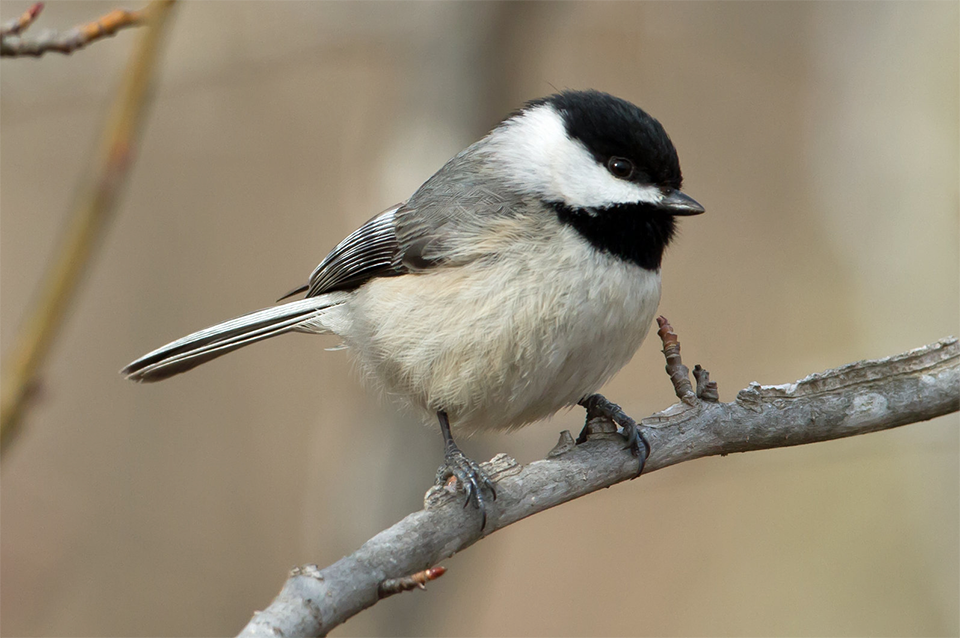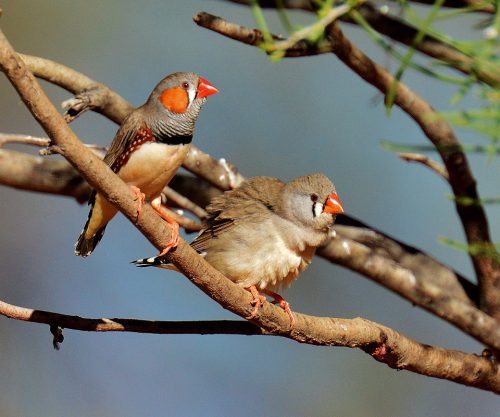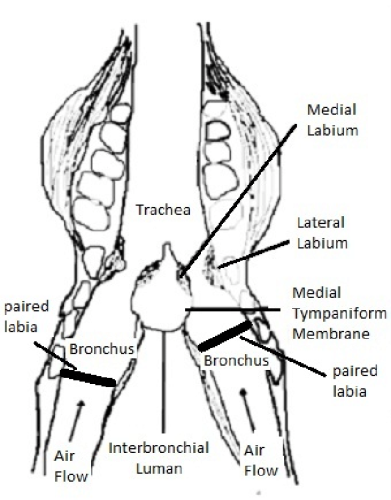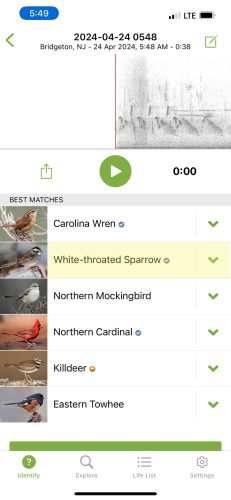A Study in Bird Song
Our columnist discovers that when it comes to birds’ morning songs and calls, it’s not what we hear but what we can’t hear that may matter most.


The dawn song of birds is one of my favorite things. Each April and May I sit in the darkness of the forest awaiting the first calls of the birds. If I’m lucky and it’s a bit overcast the overture may last longer than an hour or two. Maybe you are fortunate to have screened windows that you can open to afford yourself this gift of spring as dawn breaks.
My ability to distinguish species has improved as the result of Cornell Lab’s Merlin, a mobile phone application that records and identifies birds as each one calls or sings. The trees are not fully dressed for the summer since each leaf has not yet unfurled or grown to its full size so that hearing and seeing the birds is much easier than it will be by May’s end. This visibility adds to the birds’ vulnerability but it’s a great time to advertise for a mate: “Wanted, one female Carolina chickadee, willing and able to raise our family.”
This took me on a quest to find out what the birds are saying. Could it really be as obvious as what we describe and hear? Does the male chickadee’s fee-bee-fee-bay in the spring simply mean “I’m over here! Want a date and some help raising a family?” And is its harsh scolding, chick-a-dee-dee just the sounding of an alarm?
Let’s start with a songbird’s vocal structure. Birds do not have a voice box like ours; rather they have a larynx but it does not include vocal cords. It is only a respiratory valve that protects its airway. Birds have a unique and complex structure called a syrinx, located at the base of the airway at the split of the trachea just above the lungs. By contrast, most vertebrates’ vocal apparatus is located high in the airway and is modulated by a single pair of vocal folds.
Our avian friends have multiple muscle complexes and a series of membranes that are variably tensioned, providing both passive and active oscillation control. And since the syrinx is located at the confluence of the trachea split, some birds produce different sounds from either side of the syrinx simultaneously or independently. So when you hear a solitary bird with a complex voice singing what sounds like a duet or harmony, indeed that is what it’s doing (Michael B. Habib).
It is this structure that gives voice to a bird, and it’s a voice that we are not capable of hearing in full. I’m having enough of a challenge with that which I can hear without learning that most of the bird’s vocalization is not perceptible to humans. Let’s explain that a bit further.

Psychologists Robert J. Dooling, Gregory Ball, and Nora H. Prior have been studying the complexities of bird songs in the laboratory with zebra finches, an Australian species. Dooling has been conducting studies since the 1970s. He is a former director of the Neuroscience and Cognitive Science Program and associate vice president for Research at the University of Maryland. He focuses on comparative aspects of hearing and acoustic communication and has written more than 250 articles, chapters, and books on this topic. A qualifier: Despite this progress, how exactly birds ‘talk’ to other birds to convey important information is still a mystery—one that Dr. Robert Dooling and his team from the University of Maryland are keen to unravel. They are experts in Behavioral Ecology, Linguistics, Psychoacoustics, and Neuroendocrinology. Together they have worked on problems from the brain mechanisms underlying vocal production to perceptual specializations for perceiving species-specific song to the coding of meaning in sound sequences. This work may have important implications for our understanding of the evolution and unique structure of human language.
I’ve included this description because the main irony is that, as is true with many animal senses, we can’t perceive the world the way they do. We don’t see with our tongues like a snake, nor do we make visuals by sensing heat. We lack the gift of echo-location to find prey like a bat. We can’t sense vibrations in our feet like an elephant. In fact, most mammals can hear ultrasound, high level frequencies that we as humans don’t perceive. Nor do we see ultraviolet light as birds can. And we can’t hear like a bird. Making the discovery that birds hear more than we do by hearing “faster” was a huge scientific breakthrough.
As birdwatchers we listen and learn birds’ individual calls and we even try to describe these with phonetic text, as I demonstrated earlier with fee-bee-fee-bay. But it turns out that many songbirds aren’t very interested in the symbolization of sound, or even the notes. They are focused on what Dooling’s team calls “temporal fine structure,” and this takes place at speeds that humans can’t process.
Dooling found that our ears can only distinguish between sounds that are longer than 3.0 to 4.0 milliseconds, yet his test species can hear distinctions at 1.0 and 2.0 milliseconds. Birds can perceive variations that are presented far too rapidly for humans to hear or process.
Furthermore, in some species the order of presented sounds doesn’t matter; only the complexities of the temporal fine structure are important. It is within this fine structure—the minutiae—which humans can’t process, that scientists believe birds are communicating important information.

In most songbirds only the males sing. Females instead have calls, and Dooling surmises that both relay detailed information in this rapid and distinctive presentation—from the housekeeping of raising young to the details of migration.
Jeffery Lucas, professor of Biological Sciences at Purdue, measured auditory neurons on six different species of North American birds as he sought to discover whether birds with more complex songs are heard differently than those with simpler tunes. While doing so he stumbled on a discovery: In some species of birds the temporal fine structure increased during fall migration.
For example, he found that chickadee males in the spring focus on the pure notes of their song, fee-bee-fee-bay, in order to attract females. But in the fall speed is more important, as more information is being relayed. Conversely, the white-breasted nuthatch relies on speed in the spring and pitch in the fall. So many mysteries to unravel!
Not only does the speed of vocalization change but so does the speed of hearing. Sex hormones like estrogen actually influence the hair cells in a songbird’s ears during breeding season, enabling it to literally hear faster.
Over the coming weeks, when I sit in my blind awaiting a turkey’s gobble and listening to the dawn song, I will be dreaming up scenarios of all that is being said that I cannot hear. I will enjoy the conversation just the same.
Sources:
- Birds prefer sound texture over sound order. Research Outreach, Robert Dooling, October 28, 2020.
- “What Do Birds Hear When They Sing Beautiful Songs?” By Barbara J. King, December 1, 2016.
- An Immense World, by Ed Young, 2022, Random House.
- New perspectives on the origins of unique vocal tracts of birds, Michael B. Habib.









